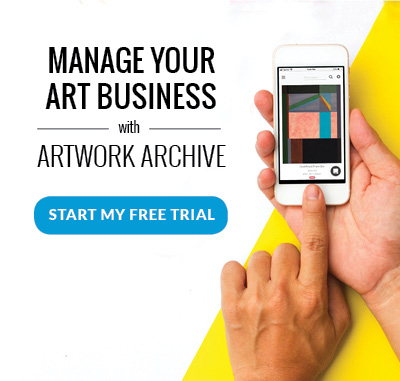 "I want people to feel hopeful and to realize they can evolve, transform, be reborn."
"I want people to feel hopeful and to realize they can evolve, transform, be reborn."
Artwork Archive's Featured Artist Dela Anyah delves into the significance of found objects during moments of hopelessness, loss, and rejection. His artistic practice is a multifaceted exploration that encompasses sculpture, installations, photography, painting, and film.
Drawing inspiration from Ghanaian popular culture, historical media accounts, and his own experiences in vulcanizer shops in Ghana, Dela's work centers on the visual iconography of these spaces.
Within the seemingly chaotic landscapes of worn tires, vehicle wreckage, and scrawled signage, he uncovers stories of value and existence. Dela explores meaning in the seemingly mundane and celebrates the potential for rebirth and transformation.
He views his discarded objects as symbols of the human experience, much like ourselves when we feel scarred and discarded. This transformative journey signifies that, just as these objects find new purpose, we, too, can discover hope and renewal, regardless of our circumstances.
Artwork Archive had the chance to chat with Dela Anyah about his creative process, how he began working with discarded tires, and how Artwork Archive helps him manage his studio and art career!
You can see more of his work on Discovery and learn more about his art practice below.
 Dela Anyah working in his studio. Photo courtesy of the artist.
Dela Anyah working in his studio. Photo courtesy of the artist.
Do you have a favorite or most satisfying part of your process?
My favorite portion of the creative process is where I acquire new ideas.
Finding new uses or applications for the found objects I utilize in my work always excites me. This could occur while working or conducting research.
I also appreciate suggestions from assistants and outside sources. Ideas, in my opinion, present a challenge, which adds excitement to the remainder of the process of crafting each piece.
What led you to choose vulcanizer shops and scrap yards to find the discarded objects you use?
I started painting after being influenced by artists such as Matisse, Picasso, Basquiat, and Modigliani.
During my study of Picasso, I learned that he drew inspiration for his masterpiece Les Demoiselles d'Avignon from African masks. As an African, this led me to contemplate how I could connect with the roots of African art for inspiration.
During my research, I came across an article about how certain traditional African works incorporated found objects. From that moment on, I began to perceive every object as having meaning long after its initial use had ended.
In early 2020, while working on projects that involved gallon [jugs], I bought strips of tires without giving it much thought, and I had them lying in my studio for a while.
Tires first captured my attention later that year—they were everywhere, and I sketched a few tapestries using this material.

Dela Anyah, 'BOITUMELO', PPR pipe, Rubber Inner Tubes, Bicycle Rim, License plates and Rivets, 79 x 75 in, 2023
However, I couldn't figure out how to execute them, so I put the idea on hold. The following year, as I was driving, I felt my car tires shaking, so I pulled into the nearest vulcanizer shop, only to be told that there was nothing wrong with them. While at the shop, the idea I had previously shelved returned, and I decided to learn everything I could about tires.
The vulcanizer showed me various parts, and when he pulled out a large, soft, leather-like material called an inner tube, I knew it was what I had been looking for.
I purchased several inner tubes, which remained in my studio for months until a day when I found myself creatively frustrated and in need of guidance. By that point, I had been working on various creative projects outside of art, including literature, design, and fashion, but none of them were going as I had wanted. Feeling drained, I prayed and then went to bed.
In a dream, I saw the inner tubes being woven and connecting. Upon waking, I purchased the tools I needed, rushed to my studio, and started putting everything together—effectively ending all my other creative projects. Since then, my practice has been about unearthing and understanding the materiality of these found objects, exploring the spaces they inhabit—vulcanizer and mechanic shops, delving into their histories, and considering the potential future problems they may pose due to improper disposal.
What impact do you hope your work will have on those who view it?
I want people to feel hopeful and to realize they can evolve, transform, and be reborn.

Dela Anyah, 'ADEMOLA', PPR pipe, Rubber Inner Tubes, License plates, and Rivets, 46.5 x 59 i, 2023
Can you elaborate on the transformation of found objects into visual representations of identity and rebirth?
To me, found objects represent a manifestation of our existence during moments of hopelessness, loss, feeling discarded, and being unwanted. What I do is deeply symbolic—it's about conveying the message that even substances deemed most hopeless can discover hope and be transformed into something of significant value.
This process signifies that, similarly, we, regardless of how low, scarred, hopeless, or rejected we may feel, are not without hope.
My works bear actual African names, aligning with the African tradition where names play a pivotal role in one's identity, given to a child at birth based on circumstances surrounding their arrival. I adopt a similar approach by bestowing uplifting names upon my works after their transformation, providing them with a new direction and identity.
The transformative process involves my visits to vulcanizer and mechanic shops, where I either purchase or sometimes acquire these objects for free. Subsequently, these objects find their way to the studio, where they are meticulously cleaned and utilized in crafting my sculptures. Upon completing the work, I sign it and inscribe its new name—a name inspired by my feelings or events that occurred during its creation.
Finally, the artwork is photographed and uploaded to Artwork Archive.
This entire process revolves around discovering something seemingly hopeless, effecting a transformation, and endowing it with a new identity.

Dela Anyah, 'KPLOM', Polypropelyne sacks, inner tubes, 54 x 75 in, 2023
What does success as an artist mean to you?
To me, success is when people resonate with my work.
How do you handle creative blocks and find the motivation to keep creating?
I pray, read, constantly purchase a lot of books online, and spend a significant amount of time on YouTube and social media.
Why did you decide to use Artwork Archive to inventory/manage your artwork?
I decided to use Artwork Archive because it's straightforward to use. I tested others on the market that were either visually overwhelming, lacked features, or were very pricey for what I needed.
Artwork Archive is user-friendly, and I appreciate the pricing and features.
Artwork Archive Tip:
Artwork Archive offers different plans for artists at all career stages. Plus, you can easily upgrade whenever you want, so your plan grows as your art career does.
Dela Anyah, 'ABIOLA', Spray paint, Acrylic Paint on Paper, Jute sacks, Rubber Inner Tubes, PPR pipe, 98.4 x 98.4 in, 2023
How do you use Artwork Archive on a daily basis?
Artwork Archive helps me keep track of all works created by my studio.
With this platform, I can easily create reports and portfolios, whether it's for responding to requests or applying for residencies, competitions, and other opportunities.
I also use it to create Inventory Reports for the institutions I work with and to record the various locations where my artwork is exhibited.
Additionally, I can create Certificates of Authenticity and do other essential tasks—all within one platform. I can't imagine running my studio without Artwork Archive.
Artwork Archive Tip:
Find the best artist grants, residencies, exhibitions, open calls, and more in our 2024 Artist Opportunity Guide
Then, prepare your best application using these tips!
What advice would you give an artist who’s just starting out in their professional career?
The advice I would offer every artist is to study or gain an understanding of art law and contracts. This is crucial as every interaction with art institutions, galleries/dealers, collectors, and more relies on them.
Dela Anyah uses Artwork Archive to keep track of his artwork, send professional reports to clients, apply for art opportunities, and a lot more.
You can make an online portfolio, catalog your artwork, and generate reports like inventory reports, tear sheets, and invoices in seconds with Artwork Archive. Take a look at Artwork Archive's free trial and start growing your art business.








